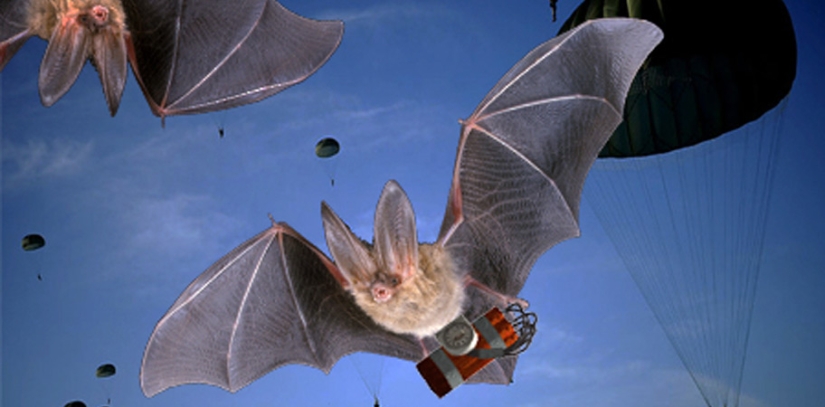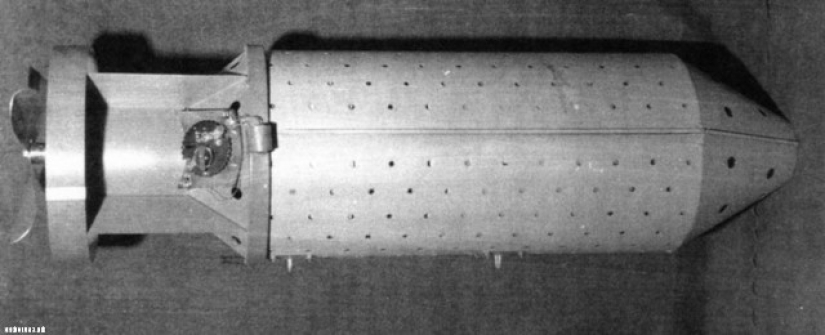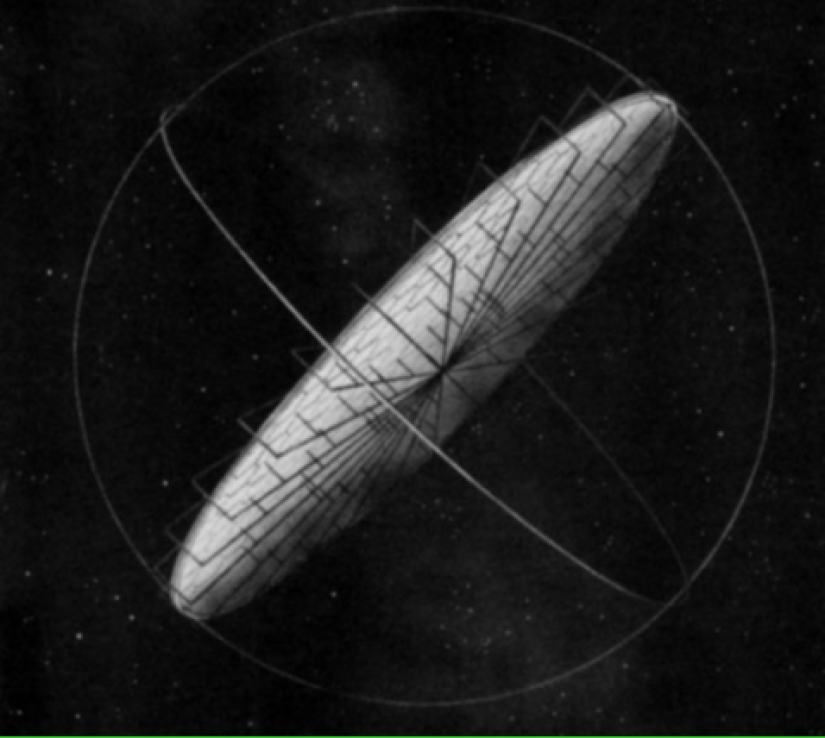Gay bomb and other most absurd military projects
Categories: History | Technology
By Pictolic https://pictolic.com/article/gay-bomb-and-other-most-absurd-military-projects.htmlParadoxical as it may sound, war is the engine of progress. The military industry accumulates the best minds and the most advanced technologies. It also happens that in the race for an advantage over a potential opponent, engineers even overdo it, and their ideas turn out to be on the verge of extreme progressiveness and absurdity. We will tell you about such projects.
(10 photos in total)

Source: Arms-expo
Bomber Bats
In 1941, an American dentist, Lightel Adams, was visited by a very original idea. While walking through the Carlsbad caves inhabited by a large colony of bats, he came up with the idea of using these animals as aerial bombs: tie miniature napalm bombs with a clockwork mechanism to them and release them over the cities of Japan at dawn. Mice will settle down for the night in attics and roofs (at that time Japanese cities consisted mainly of wooden buildings), after which timers will work and a large-scale fire will begin.

Adams proposed this idea to the US government, and First Lady Eleanor Roosevelt, who worked in the Department of Strategic Services, liked it. The project was approved, was named X-Ray ("X-Ray") and for some time became an important element of the US strategy in the Pacific theater of operations.

A container equipped with a parachute, in which mice were supposed to be dropped from an airplane. During the fall, it heated up, and the lid automatically opened, releasing the arsonists who woke up.
Having caught tens of thousands of mice, the Americans began testing. During the first experiment, when loading into containers, several individuals with bombs prematurely came out of hibernation and hid in wooden hangars, burning them to the ground. The car of the head of the airbase also burned down. This incident was regarded as proof of the effectiveness of experimental weapons.
According to the developed plan, ten bombers were supposed to take off from Alaska and drop more than a million bats on industrial cities in Osaka Bay. The tests, however, progressed too slowly, and when it became clear that such an airstrike would not be possible to pull off until the summer of 1945, the project was closed. We decided to focus on nuclear weapons.
Death Star

Thirty years before the release of Star Wars, the Nazis were seriously working on a project of a so-called solar cannon capable of incinerating cities, draining seas and burning enemy manpower. They were based on the work of a scientist of Austro-Hungarian origin, Herman Obert, who in the 20s proposed putting a giant mirror into Earth orbit to illuminate entire cities.

Experiments in outer space became hypothetically possible after the V-2 ballistic missiles were at the disposal of the Third Reich. The Germans decided to hang a mirror in orbit that would concentrate the sun's rays into one with incredible power. The mirror was supposed to be assembled directly in space as follows: the rocket in orbit had to rotate and unwind several metal cables, which eventually form a circle. After that, it was planned to fix ready-made mirror modules on it.

Manned space stations were supposed to control the mirror, directing it to the desired area. Electricity would be generated by steam engines installed at the stations, and oxygen would be generated by plants in greenhouses.
The realization of this crazy idea was prevented, of course, by the defeat of Germany in the war. However, the scope of the project was such that even today it is unlikely to be implemented by the forces of one country.
Gay bomb
In 1994, the Pentagon announced a competition for the development of non-lethal air-to-ground ammunition. Specialists from a secret laboratory in Ohio responded with three brilliant ideas at once. First, they suggested dropping bombs on the enemy with a substance that causes severe and prolonged halitosis, that is, bad breath. Another bomb was invented to stuff with pheromones that attract bees and wasps, so that they sting the enemy until they completely lose combat readiness. And finally, the third project — the coolest - is to "fill" the shells with powerful aphrodisiacs that cause the strongest sexual arousal up to homosexuality.

Information about this, if I may say so, weapons leaked to the press in 2004 and caused a scandal in connection with the possible violation by the United States of international conventions on the non-proliferation of chemical weapons. Gay activists were also outraged: they were offended by the assumption that homosexual soldiers have low combat capability. In response to the accusations, the Pentagon said that this idea had not been developed.

In 2007, the gay bomb received the Nobel Prize, which is awarded for dubious achievements in science and technology. However, none of the invited American military did not come to the ceremony.
The Biblical Aircraft Carrier

The British Strategic Operations Command also knew how to think big. At the beginning of the Second World War, an officer of this department, Jeffrey Peake, proposed to build a ship, the very sight of which would completely demoralize the enemy — an aircraft carrier two thousand feet (609 meters) long. For comparison, the largest of the existing aircraft carriers — the American Enterprise - has a length of 342 meters. And in order to make this huge unsinkable, they decided to build it out of ice.

The project was named Habbakuk, in honor of the biblical prophet Habakkuk, who said: "You will be amazed, for I am going to do something in your days that you would not believe even if you were told." The ship was intended to serve as a floating base for aircraft tracking German submarines in the middle of the Atlantic. It was planned to maintain the temperature regime of the structure with the help of thousands of kilometers of pipes with refrigerant circulating in them. At the same time, the estimated speed of the giant was only six knots.
The idea of using ice was quickly abandoned, it was replaced with pikerite - a frozen mixture of water and sawdust. It turned out to be so strong that it reflected revolver bullets. But six months later the project was closed. The 18-meter Avvakum model built in Canada melted for three years.
Keywords: Bomb | Weapons | World war II | Homosexuality | Bats
Post News ArticleRecent articles

We have repeatedly seen that people can be incredibly similar to their parents and even grandparents. But we will never get tired ...

For all lovers of fairy tales and beautiful views of our planet, the German photographer Kilian Schonberger has created a series of ...
Related articles

Dueling is considered the prerogative of men, but this opinion is erroneous. Women, too, were not averse to fighting each other, ...

This type of cold weapon, like brass knuckles, is known to everyone. But humanity has also invented other neognestrelnoe weapons, ...

The siege of Leningrad is one of the most terrible pages in the history of the city. The harsh winter of 1941-1942 completed what ...

If the post-apocalyptic paintings are fictitious events, the disaster movies are often removed based on real events. This, despite ...